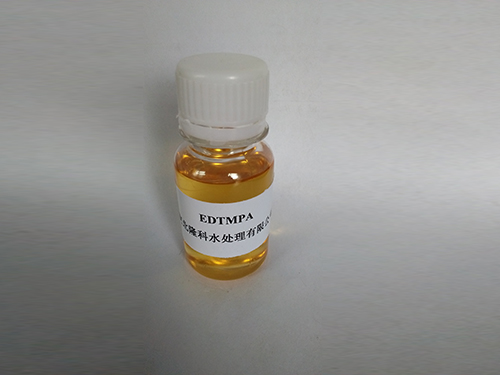Amino Tris Methylene Phosphonic Acid and Its Applications in Various Fields
Amino Tris Methylene Phosphonic Acid An Overview
Amino Tris Methylene Phosphonic Acid (ATMP) is a synthetic organic compound that belongs to a class of chemicals known as phosphonic acids. It has garnered significant attention in various fields, particularly in water treatment, agriculture, and chemical manufacturing. The compound is notable for its ability to act as a chelating agent, making it an essential component in numerous applications where the interaction with metal ions is crucial.
Chemical Structure and Properties
ATMP is characterized by its unique molecular structure, which includes three phosphonic acid groups and an amine group. This configuration endows the compound with various functional properties, primarily its chelating ability. The phosphonic acid groups can effectively bind to metal ions such as calcium, magnesium, and iron, which can prevent scale formation in water systems. The ability to inhibit scale formation is particularly beneficial in industries that rely heavily on the use of water, such as power generation, oil and gas extraction, and cooling systems.
ATMP is soluble in water, making it easy to incorporate into various aqueous formulations. Its stability and effectiveness make it suitable for use in a range of pH conditions, further enhancing its utility in different applications.
Applications in Water Treatment
One of the primary applications of ATMP is in water treatment. It has gained prominence as a scale inhibitor and corrosion inhibitor in industrial and municipal water systems. When used in cooling towers, boilers, and pipelines, ATMP helps to maintain system efficiency by preventing the deposition of mineral scales, which can reduce heat transfer efficiency and lead to increased energy costs.
Furthermore, ATMP's ability to disperse suspended particles aids in maintaining water clarity, thereby improving the overall performance of water treatment systems. Its effectiveness at low concentrations contributes to cost savings for operators while minimizing the environmental impact of water treatment chemicals.
amino tris methylene phosphonic acid

Agricultural Uses
In agriculture, ATMP is increasingly recognized for its role as a soil conditioner and growth promoter. Its chelating properties facilitate the availability of essential nutrients to plants, particularly micronutrients like zinc and iron, which are critical for plant growth and development. By enhancing nutrient solubility and uptake in crops, ATMP can contribute to improved agricultural yields and quality.
Moreover, the application of ATMP in fertilizers can improve their efficiency, leading to better nutrient delivery while reducing the overall quantity required. This not only promotes sustainable agricultural practices but also aligns with the growing emphasis on reducing chemical inputs in farming.
Environmental Considerations
As the world becomes increasingly aware of environmental issues, the demand for safer and more sustainable chemical solutions is rising. ATMP is considered to be less harmful to the environment compared to traditional phosphates, as it is biodegradable and does not contribute to the same level of eutrophication problems associated with other phosphorus-containing compounds. Additionally, its application in industrial processes can help minimize waste and improve water management.
Conclusion
Amino Tris Methylene Phosphonic Acid stands out as a versatile compound with a growing range of applications across various sectors. Its effective chelating properties ensure its prominence in water treatment, while its agricultural benefits contribute to enhanced crop productivity and sustainability. As industries and agriculture seek environmentally friendly alternatives to traditional chemicals, the role of ATMP is likely to expand, affirming its place in modern chemical applications.
-
lk-319-special-scale-and-corrosion-inhibitor-for-steel-plants-advanced-solutions-for-industrial-water-systemsNewsAug.22,2025
-
flocculant-water-treatment-essential-chemical-solutions-for-purification-processesNewsAug.22,2025
-
isothiazolinones-versatile-microbial-control-agents-for-industrial-and-consumer-applicationsNewsAug.22,2025
-
scale-inhibitor-key-solutions-for-water-system-scale-preventionNewsAug.22,2025
-
organophosphonates-versatile-scale-inhibitors-for-industrial-water-systemsNewsAug.22,2025
-
scale-and-corrosion-inhibitor-essential-chemical-solutions-for-water-system-maintenanceNewsAug.22,2025





